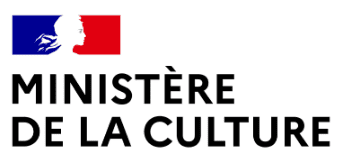Saigon, summertime. A Japanese director is getting ready to shoot her movie when her lead actor disappears. You could summarise Chun Wang and Hikky Chen’s film like this, but there’s far more to Sappukei: a treasure hunt, ghost movie, a meditation on creativity, an invitation to a journey. Following the traces of these shadows – he disappears before we’ve even laid eyes on him, she’s only present through her voice – and the gentle chords of an acoustic guitar, an erratic and melancholic narrative takes shape amongst he gaps. How do you film absence? By playing in between the cracks. The directing duo play with at adding meaning to the sets and staging the disappearance in hollowed-out shots, stripped entirely of any human presence. A door mysteriously swings open at the back of a dance studio, a bottle comes out of nowhere and smashes on the stairs, a white veil floats in the middle of a railway siding. The audience has free rein to imagine the presence of the two ghosts, or at least their traces through the bodies of these anonymous figures filmed in secret. Gaps once again. Between fiction and documentary, projection and reality, the past and the present – Sappukei seems to want to express the need to persevere and carry on creating, despite the gaps, even if it means making enigmatic gestures that question as much as they signify. Like the two hands in the middle of the screen which join identical rectangular boards together to reveal halos of light. The evocative power of the sounds and images in this film, which explores the possibilities of cinema and conjures the invisible, invites us to open up our gaze. Just as the opening text we read states, “In the end, it was only when she left that she realised that everything already seemed to be complete, just waiting to be discovered.”
(Louise Martin Papasian)
Chun Wang Hikky Chen
- Flash Competition
- 2022
-
 Flash Competition
Flash Competition
- Flash Competition Prize
- 2022
SAPPUKEI
Chun Wang and Hikky Chen
Interview with Chun Wang and Hikky Chen
Sappukei is about a Japanese director who came to Saigon to shoot a film and whose actor disappeared. What was the genesis of the film? And why did you choose to shoot it in Vietnam?
This is the first time we work on a film together. We decided to go to a place completely unfamiliar to us, a tropical location close to the equator. We opened a map, took Taipei as a coordinate center, drew an X, and the first place where the lines crossed was Saigon. At the grocery store just downstairs from our apartment, I met the young man who became the prototype for the character appearing at the beginning of the film. He always reminded me of Buster Keaton and it is because of him we decided to make a wild story about a young man who fantasizes about becoming an actor. Hikky has lived in Japan for a long time, that is why we pursued the figure of a Japanese film director.
The film progresses by staging the absence and disappearance in an impressionistic form, especially through the fictional narrative off screen. What interested you in this motif of absence and how did you work to give it substance? Did you have a script or did the film rather take shape in the editing process?
The process of viewing images is always entangled with a notion of absence, making oneself feel present through the act of perception. Many times, because of absence our imagination gets activated and stimulated. In the grammar of the film, it is like Shot (imagined)-Reverse shot (reality). The original script was just a loose draft, it evolved with the actors and responded to the events on set. The young man left Saigon after our first day of shooting because of family problems. Therefore, we turned to depicting the disappearance of a person. The editing process is a very important part comparable to writing a polyphonic piece of music, I see a part of my body left in the images recorded in Saigon.
Shots devoid of any human presence are mixed with documentary images, which leave room for looks to camera. How did you work on the image of the film and how did the shooting go?
When it comes to cinematography, it is actually a matter of distance. Just like looking at a painting, finding a suitable viewing distance is also a process of examining one’s own experience of visual perception. The principle of filming is to minimize the invasiveness of space and people, therefore we used light equipment to shoot. Sometimes the more one looks, the more immersive the images are, and the “I” of an individual viewer lessens and gradually dissolves.
In the middle of the film, a performance art sequence appears: two hands bring together boards in a symmetrical way while on the sound, we hear the French words “Pirouette. À la seconde. Jean Cocteau”. Could you elaborate on this sequence’s choice and its meaning for you?
This is a projection experiment, using objects to expand memory. The transition from observing the external landscape to facing the inner self is a turning point in the film. Hikky used to be a dancer and that motivated us to explore the idea of the body memory: the character of the female director recalls the things that have left her mark, both physical and spiritual. We later realized the movement of “pirouette à la seconde” was similar to that of the film reel moving inside the camera or a projector.
Sappukei also proposes a reflection on creation, through the figure of the director and the anecdote of the painter. Could you comment on this dimension of the film?
When I read W. Somerset Maugham’s short story The Appointment in Samarra, I was fascinated with the obliviousness towards random events and their fateful trajectory. You never know how a person who randomly passes by might influence your life. Language can change the way we think, and in consequence a shift in thought can alter reality. This is what I want to express through the figure of the painter.
The title of the film is a Japanese word: SAPPUKEI. What does it mean?
SAPPUKEI is a combination of two Japanese words: satsu (to kill) and fukei (landscape). The original meaning is “to destroy the beautiful scenery and make people lose their joy”. For me, the element of destruction ingrained in the word SAPPUKEI points towards a rebellion against the inherent consciousness forced on an image, the landscape that creates a space where events take place, all processes that leave traces – unceasingly superimposed, repeated and changed to form a unique sculpture.
The film is produced by the recently formed Ge-Stell Collective. Can you tell us about your work with the collective?
It was our first time working together with Ge-Stell Collective. When I was done editing, I showed the final cut to the group. They were very interested and decided to help me with promoting the film, guiding me on how to connect SAPPUKEI with its audience. Our next project will be a mysterious story of a voice collector and a hunter.
Interview by Louise Martin Papasian
-
 Flash Competition
Flash Competition
Technical sheet
Taiwan / 2022 / Colour / HD, Stereo / 19’
Original version : japanese
Subtitles : english
Script : Chun Wang
Photography : Chun Wang
Editing : Chun Wang
Sound : Yu-Hsien Wu
Production : Wen Hsu, Hsiang Chen (Gestell Collective)
Distribution : Wen Hsu (Gestell Collective).
- Autres films / Flash Competition






